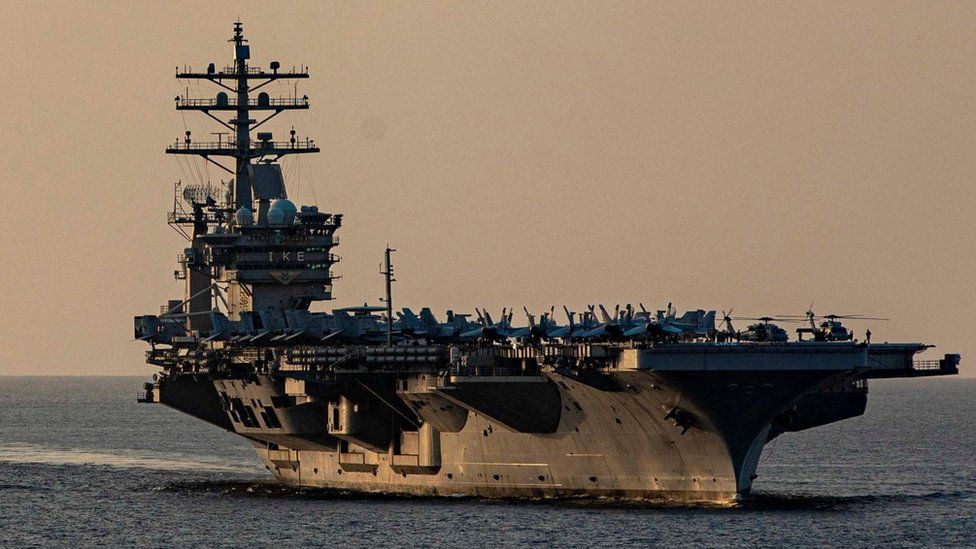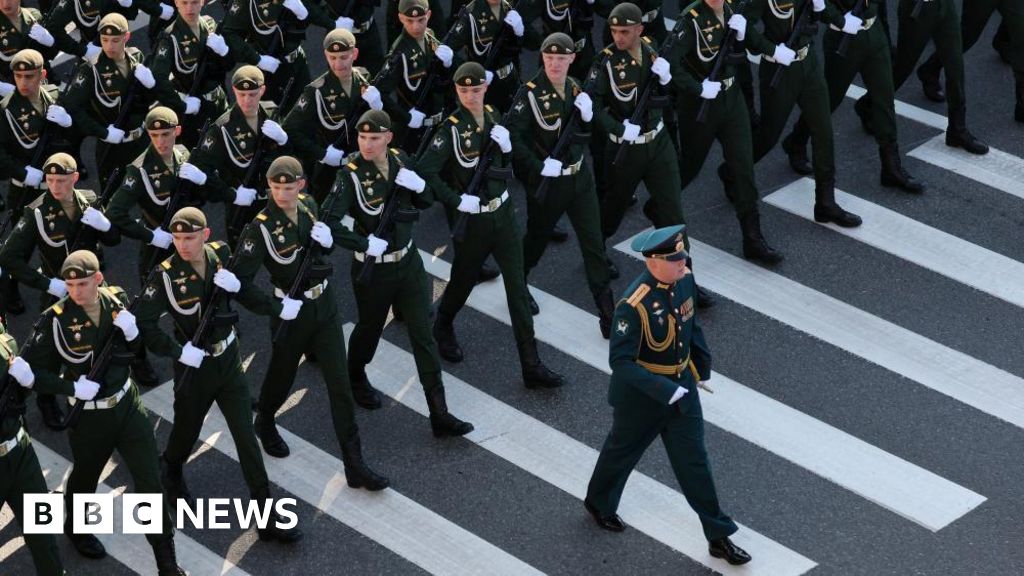ARTICLE AD BOX
 Image source, Reuters
Image source, Reuters
The USS Eisenhower is protecting shipping in the Red Sea
By Joshua Cheetham, Tom Spencer and Shruti Menon
BBC Verify
In recent weeks the dangers for shipping in the Red Sea region have increased dramatically, as Iranian-backed Houthi fighters have targeted commercial shipping with drone and missile attacks, as well as more brazen assaults by boat and helicopter.
The Houthis, who control a large part of Yemen, have declared their backing for Hamas in its war with Israel, and say they are targeting commercial vessels with links to Israel.
But many of the ships targeted, particularly in recent days, have no clear links to Israel at all.
As can be seen in data mapped by BBC Verify below, most of the attempted strikes on shipping have occurred at the southern end of the Red Sea, along the Yemeni coast, as the waterway narrows into the Bab al-Mandab Strait.
Shipping further east in the Gulf of Aden has also been targeted.
Only a few of the attempted strikes have hit their targets. One of the most recent was on 17 January, involving the Genco Picardy, a US-owned bulk carrier. It sustained damage to its side from a Houthi drone but was able to continue its journey.
On the scene shortly afterwards to take this photograph was an Indian navy warship - an indication of the multi-national scale of efforts to repel Houthi attacks.
Image source, Indian Navy
Image caption,The US-owned Genco Picardy after a Houthi drone attack
Houthi firepower
Houthi forces have used a range of weaponry, including missiles and kamikaze attack drones.
They possess Qasef-1 and Qasef-2 drones with an estimated range of 200km, and others with a flying range of up to 1,800km. Their ground-launched missiles may be capable of striking ships up to 800km away.
The Houthis have also tried boarding ships using small boats, and on one occasion, used a helicopter to land an assault team on the deck of a container ship, the Galaxy Leader. The group hijacked the vessel and it is still being held off the Yemeni coast.
Image source, Getty Images
Image caption,Houthi fighters hijacked the Galaxy Leader, a British-owned, Japanese-operated ship in November
Some weaponry being used in these attacks has been plundered from the country's military since the start of Yemen's civil war. The UN also says components for Houthi weaponry have been sourced from east Asia through civilian supply chains.
But the increasingly sophisticated array of drones and missiles used by Houthi forces has increased speculation that Iran is supplying them with weapons as well.
The US has announced the seizure of what it says are parts for missiles and air defence systems on a fishing boat travelling from Iran to Yemen.
Military analysts also believe an Iranian ship, the MV Behshad, is helping the Houthis target vessels in the region. The MV Behshad was originally in service as a cargo ship which analysts say has now been retrofitted with surveillance equipment.
The BBC has approached the Iranian government for comment.
Image source, EPA
Image caption,The Houthis have displayed an array of drones during military parades and on social media
The international response
Lightly-armed private guards that travel with many of the commercial ships are not equipped to fend off attacks from the air, says Chris Farrell, who has led on-board security teams in the region.
"It's one of the biggest challenges commercial shipping has faced in a very long time," he says.
As the international response has ramped up, the US and UK have carried out air strikes on Houthi targets in Yemen in an attempt to degrade their military capability.
However, the Houthis control extensive areas of mountainous terrain in Yemen, and military experts say this makes it easier to hide their radar platforms, munitions and launch vehicles.
In December, a US-led military partnership was announced to safeguard commercial shipping in the area with warships patrolling the waters of the Red Sea. The UK has committed naval vessels to the operation.
Other countries, including France, have military vessels in the area as well, but outside the US-led operation.
Coordinating the efforts of several international partnerships will be a challenge, says Bradley Martin, a former US Navy captain, now at the Rand Corporation.
Keeping these vessels fuelled and re-supplied with sophisticated weaponry is very expensive, he says. An intercept missile such as the Sea Viper can cost over a million dollars whereas a Houthi attack drone may only cost a few thousand dollars to produce.
Image source, Chris Farrell
Image caption,As a ship protection officer, Chris Farrell has defended shipping travelling through the Red Sea
Evasive action
A growing number of companies are redirecting their ships away from the Red Sea, choosing a much longer, more costly journey around Africa's Cape of Good Hope.
Those operators choosing to risk the dangers of the Red Sea route have adopted other measures to reduce the possibility of attack.
Some have disabled their on-board AIS tracking - the system all commercial shipping uses to allow their position and declared route to be monitored - making it harder for Houthi forces to locate them.
Some ships have taken to declaring "no link to Israel" on their location equipment. Others have written "armed guards on board" or "all Chinese crew" - underscoring what ship owners believe will deter attackers.
Despite recent US and UK airstrikes, the Houthis "retain considerable ability" to target shipping, says Dr Martin, but as their missile stockpiles deplete, we may see an uptick in attacks by drones and boats.
"The risk to shipping can be brought down," he says, but ultimately the key is resolving broader political issues like the Israel-Gaza conflict.
"We're not going to end it just with defending shipping."

 1 year ago
121
1 year ago
121








 English (US) ·
English (US) ·